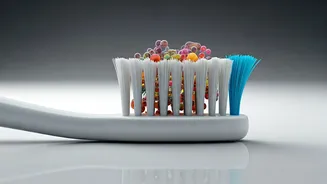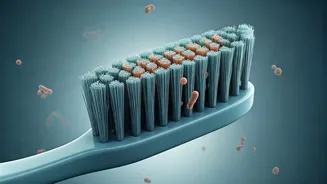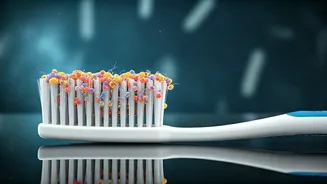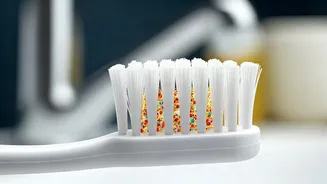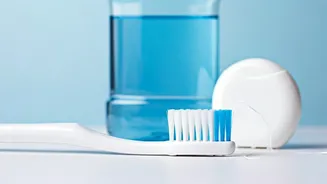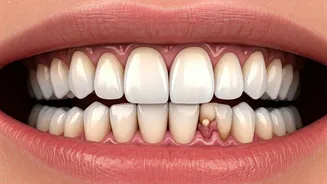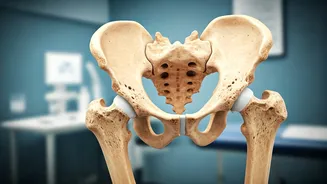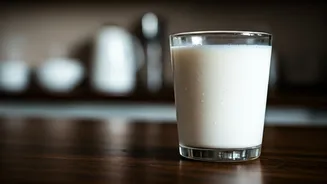Microbial Menagerie Revealed
Your toothbrush, a seemingly insignificant item in your daily routine, plays host to an astounding array of bacteria. Research reveals that millions of microorganisms
can find a home on your toothbrush, creating an environment that thrives with moisture and remnants of your oral cavity. The presence of these microbes poses a significant health risk. Each time you brush, you're potentially introducing these bacteria into your mouth and, consequently, your body. This makes understanding the microbial landscape of your toothbrush essential for effective oral and overall health management.
Sources of Contamination
The toothbrush’s contamination stems from various sources, making it a hotspot for bacteria. Bacteria enters the equation from a variety of entry points. One significant source is the mouth itself, where bacteria thrive in the form of plaque and debris. Using the same brush after a sickness will expose you to your previous illness. Furthermore, the bathroom environment also presents risks, as airborne particles and droplets can contaminate your toothbrush. Simply storing your toothbrush in close proximity to the toilet, for instance, can expose it to bacteria. Considering these varied sources is the first step toward reducing the microbial presence on your toothbrush.
Health Risks Explained
The presence of millions of bacteria on your toothbrush translates to several potential health hazards. Introducing these microorganisms into your mouth can lead to infections. The bacteria can also trigger or exacerbate inflammation in the gums, leading to diseases like gingivitis and periodontitis. More concerningly, bacteria can enter the bloodstream through cuts or abrasions in the mouth, potentially causing systemic infections. Beyond oral health, there's the chance that it may impact your overall health. Therefore, maintaining your toothbrush’s hygiene is not merely about having clean teeth but it is also essential for defending your overall health and well-being.
Effective Cleaning Strategies
Several effective cleaning strategies can reduce the bacterial load on your toothbrush. Washing your toothbrush after each use can help to remove food particles and plaque, limiting bacterial growth. Rinsing your toothbrush under hot water is also recommended as a way of getting rid of bacteria. Using a toothbrush sanitizer is another method of disinfecting your brush and reducing contamination. Moreover, regular replacement of your toothbrush, ideally every 3 months or sooner if the bristles start to fray, is vital. Implementing these straightforward practices ensures the best possible oral hygiene and reduces the hazards posed by the bacteria that can live on your toothbrush.
Proper Storage Solutions
Proper storage significantly affects the cleanliness of your toothbrush and helps decrease bacterial growth. Storing your toothbrush in an open, upright position allows it to air dry, reducing the ideal conditions for bacterial growth. Always ensure that toothbrushes aren't stored in closed containers where bacteria can thrive. It is also important to maintain a safe distance from other toothbrushes. Avoid storing your toothbrush near the toilet, as airborne particles from the toilet can get on the bristles. By integrating these storage practices, you can make sure that your toothbrush stays as clean as possible.
